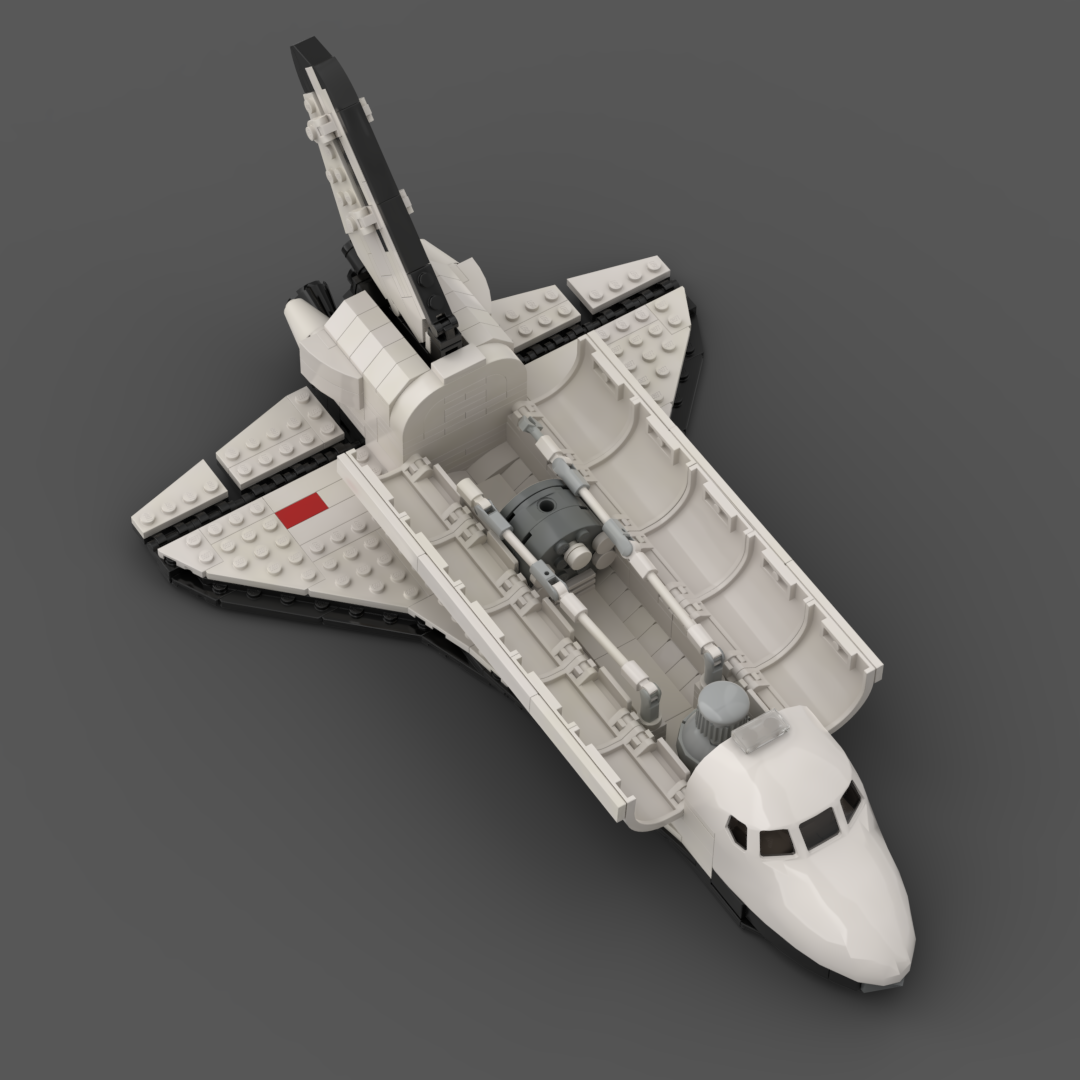
LEGO Designer:
Allan Jordan (Drscoop)
Designed:
January 2020
Categories:
All, Space Agency - Roscosmos, Spaceplanes
Launch Vehicle Details
Stages:
Length:
Diameter:
Mass at Launch:
Low Earth Orbit Capacity:
Total Thrust:
Apogee:
Class:
Buran (Russian: Бура́н, IPA: [bʊˈran], meaning “Snowstorm” or “Blizzard”; GRAU index serial number: “11F35 K1”) was the first spaceplane to be produced as part of the Soviet/Russian Buran programme. It is, depending on the source, also known as “OK-1K1”, “Orbiter K1”, “OK 1.01” or “Shuttle 1.01”. Besides describing the first operational Soviet/Russian shuttle orbiter, “Buran” was also the designation for the entire Soviet/Russian spaceplane project and its orbiters, which were known as “Buran-class spaceplanes”.
OK-1K1 completed one uncrewed spaceflight in 1988, and was destroyed in 2002 when the hangar it was stored in collapsed. The Buran-class orbiters used the expendable Energia rocket, a class of super heavy-lift launch vehicle.
Buran OK-GLI
OK-GLI (‘Orbital ship for horizontal flight tests’), also known as Buran Analog BTS-02 (literally ‘big transport aircraft, the second’!), was a test vehicle (“Buran aerodynamic analogue”) which pre-dates the orbital Buran reusable vehicle. Built in 1984, it was the USSR equivalent of the US shuttle Enterprise and was used for atmospheric glide and landing tests. Unlike Enterprise, OK-GLI could operate autonomously (though it flew crewed), and was also self-powered, so it could take off from a normal runway without use of a carrier aircraft.
After 25 test flights between 1985 and 1988, it was retired and eventually came to rest as an exhibit at the Technik Museum Speyer in Germany.
Buran OK-GLI is 36 metres long, 16 metres high and weighs about 80 tonnes.
Designer Notes
Part count: 475 bricks, 148 lots.
| Unit | width | length | height |
|---|---|---|---|
| Studs | 42.7 | 26.0 | 16.6 |
| Centimetres | 34.2 | 20.8 | 13.3 |
| Inches | 13.5 | 8.2 | 5.2 |
Downloads
Buran Atmospheric Test Vehicle (OK-GLI)
Part count: 475 bricks, 148 lots.
| Unit | width | length | height |
|---|---|---|---|
| Studs | 42.7 | 26.0 | 16.6 |
| Inches | 13.5 | 8.2 | 5.2 |
| Centimetres | 34.2 | 20.8 | 13.3 |
No external URL provided.
Launch History information from space.skyrocket.de
Launch History information from space.skyrocket.de
Related Posts
None found